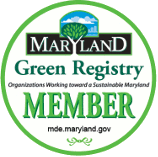Natural Resources
A brief History:
Goddard land as we know it today, was originally acquired by the USDA from private owners between 1929 and 1936. GSFC is located on five unconnected tracts of land that, with one exception, were subsequently purchased outright or occupied under revocable permit from the USDA. These tracts correspond to the eastern and western portions of the Greenbelt site combined; Outlying Areas 100, 200, 300, and 400 combined; and a small parcel on the west side of the Baltimore-Washington Parkway.
For Goddard’s current and future look, refer to Goddard’s Master Plan:
https://code200-internal.gsfc.nasa.gov/220/MasterPlan/facility-master-plan
Partnerships
Goddard has utilized experienced partners to convert turf grass to native wildflowers in areas near Building 33 and now Building 34. This first partner was the University of Maryland Extension Service. The latest are work with the USDA/Natural Resource Conservation Service.
Meadow
Goddard currently has 5 meadow projects by Building 33 and Building 34. You can view the blog here: demonstration meadow outside of B33.
Forest Conservation
|
Goddard has set aside forest areas since the development of Building 33 in 1997 and now has a total of 36 acres set aside. |
Wildlife Management with (EA)
GSFC has had an overabundance of certain wildlife over the years and has suffered much land damage.
Goddard's wildlife management actions and associated environmental impacts are documented in this final environmental Assessment.
Program Contact
Darlene Squibb 301-286-6137






